The essential baking soda
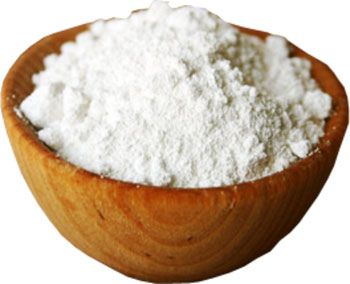
Who does not know or has never heard of baking soda?
If you are a fan of ecological maintenance, this is THE essential product to have at home. It is a non-toxic product with multiple applications.
Some websites even devote a domain name to it as there is so much information to say about this product.
The origin of baking soda
The ancient Egyptians were familiar with the white powder formed by baking soda. On the edges of the brackish waters of many African lakes, they took natron, the first natural deposit found at the bottom of salt water expanses, and of which one of the main components is soda ash.
This powder of sodium bicarbonate, more or less pure, appeared during the evaporation of salt lakes with bicarbonate water. Already at the time, this white powder was used to rub their teeth or purify their homes, to make ointments, for the ritualized hygiene of their bodies, etc.
In 1791, Nicolas Leblanc, a French chemist, artificially created sodium carbonate as we know it today.
In 1846, Austin Church and John Dwight, two New York bakers succeeded in refining the process of obtaining baking soda Thanks to the first method where sodium carbonate was industrially refined, they obtained sodium bicarbonate from Trona . Mixed with milk, this product turned out to be similar to baker's yeast. A revolution for pastry!
In the 1860s, the demand for baking soda became strong. Ernest Solvay set up his first carbonate manufacturing plant, then that of baking soda using a new process that is still used today. It produces sodium carbonate from salt and chalk, but passing through the wet process sodium bicarbonate, which precipitates.
Nowadays, the Leblanc method has been replaced by the Solvay method, which is more ecological and also more economical.
The composition of baking soda

Baking soda (NaHCO3) is a white crystalline powder, also known as sodium bicarbonate.
Baking soda carries the bicarbonate ion HCO3-. The latter is involved in many processes necessary for the balance of nature and our body. It is a pure and ecological substance, which exists in a natural state and which plays a fundamental role in the functioning of our body. Bicarbonate balances the pH (Hydrogen potential) of our body (blood, saliva…), of the oceans… Without the bicarbonate ion, life would be impossible.
The manufacture of baking soda
If the Solvay process (seen above) is used everywhere in the world for the manufacture of baking soda, today, in the United States, baking soda is primarily extracted from natron deposits. It is processed, by heating, cleaning and, finally, mixing with a solution of carbon dioxide in order to obtain baking soda.
In France, two firms (Novacarb and Solvay) produce it in Lorraine. There, the wooded plains are rich in limestone, salt and water, the three essential elements for its production. Limestone is extracted in quarries. Rock salt is recovered by injecting pressurized water (without chemical additives) 200 meters deep, into a layer over 200 million years old, in order to recover sodium chloride brine.
In the factory, the limestone is burned in a lime kiln to recover the carbon dioxide (C02). This is then cleaned and compressed, then injected in gaseous form into the brine, within a tower where it crystallizes the salt into sodium carbonate. It is put back into solution in water, and carbon dioxide is reinjected into it. Crystals are obtained, which are filtered and then dried. The sodium bicarbonate then takes the form of a white powder, more or less fine.
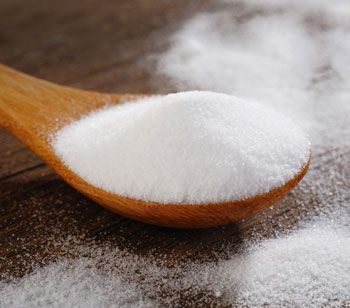
Properties of baking soda
1 - Bicarbonate is one of the so-called “buffer” substances. It is able to stabilize the pH of solutions around 8.1. It is therefore perfect for combating gastric acidity, for combating acid corrosion in pipes, for neutralizing the venom of many insects (mosquitoes for example), for eliminating dirt often made up of fatty acids.
2 - The hardness of your water is an indicator of the level of limestone in the water: it corresponds to its calcium and magnesium content. The more it contains, the “harder” it is. Limestone is nothing but calcium carbonate with the addition of magnesium carbonate. Hard water decreases the detergent properties of detergents and soaps… They must therefore be used in larger quantities! Baking soda, dissolved in water, prevents calcium ions from precipitating into limestone (calcium carbonate), thus preventing the formation of encrusted deposits, thus reducing the consumption of soap and other detergents. Bicarbonate is therefore a very good water softening agent.
3 - Bicarbonate is also a leavening agent. When it is mixed with another acid-prone product (such as milk, vinegar or lemon juice), it reacts by releasing carbon dioxide (CO2) in gaseous form. The same release of CO2 occurs when the bicarbonate is heated to temperatures above 70°C. The gas that is released is trapped by gluten, the elastic protein in wheat flour, increases the volume of the dough and makes cakes and cookies softer, to then escape naturally. Thanks to this property, baking soda can be used to prepare many recipes at home. Manufacturers have also understood this for a long time: production in large quantities of food products (pastries, cakes, biscuits, certain varieties of bread, etc.), but also the manufacture of industrial yeasts and effervescent powders.
4 - Many unpleasant odors are generated by acidic or strongly basic substances. The buffer effect exerted by the bicarbonate rebalances, through a chemical action, either the environment in which the odors develop, or the odors present in the air when it comes to closed places. Baking soda will not mask odors, but will prevent their formation in some cases or neutralize them in others.
5 - Baking soda is soluble in water. Its crystals dissolve before they risk damaging the surfaces it comes into contact with. This characteristic makes it an effective but non-aggressive cleaning agent. Alone or mixed with vinegar, it is an extraordinary cleaning agent.
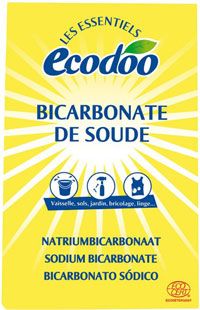
Characteristics of baking soda
- Mild abrasive - Water soluble
- Slightly soluble in alcohol
- Fungicide
- Slightly alkaline flavor
- Non-flammable
- Biodegradable
- Nontoxic
- Does not cause allergies
- Exists naturally in our bodies and on the planet
- Multi-use: kitchen, maintenance, beauty care and body hygiene, for animals, gardening, DIY
- Cheap
Baking soda or sodium bicarbonate ?
Sometimes we talk about baking soda, other times sodium bicarbonate, but then, what's the difference?
In fact, there isn't! These are 2 different names, that's all!
And there are others. Depending on the country and the sectors of use, the designations vary greatly. So if you see the following names, remember that it is baking soda:
- NAHCO3: the chemical formula of baking soda
- Sodium hydrogen carbonate or E 500 ii (so named as a food additive)
- Monosodium hydrogen carbonate
- Sodium hydrogen carbonate
- Sodium hydrogen carbonate (name used mainly in chemistry).
- Baking soda (in English: to bake = to cook).
- Natrii hydrogenocarbonas, Natrum bicabonatum or Natrium bicarbonicum (names used in the medical field, or homeopathy. They also recall the origins with natron)
- "Little cow" in Quebec (allusion to a historic brand that accompanied the pioneers)
- Vichy salt (Quite rare expression today because bicarbonate is the main mineral in Vichy water)
Do not confuse baking soda with
- Caustic soda
Be careful, baking soda really has nothing to do with caustic soda. With the NaOH formula, caustic soda is a very corrosive strong base, and therefore very dangerous. It must therefore be handled with great care.
- Sodium carbonate (also called soda ash)
These crystals are more powerful than baking soda in degreasing and cleaning. It is also a non-toxic product for the environment, however it is not biodegradable. It can be a bit irritating if you have sensitive skin. So handle it with gloves, if necessary. In industry, it is mainly used as a "melt" in the manufacture of glass. Sodium carbonate or soda ash is the big brother of baking soda because it goes into the process of making baking soda. Its chemical formula is Na2CO3. Besides, what is funny, at more than 60° baking soda turns into soda ash, water and carbon dioxide.
Difference between food grade and technical grade
We are often asked the difference between food grade baking soda and technical grade baking soda. Can I use the technical grade one to whiten teeth or aid digestion? Or conversely, can I use the food-grade one as an all-purpose cleaner or natural insecticide?
What is certain is that in both cases, it is indeed the same molecule. The difference lies above all in its purity but also in the size of its grains: from 50 µm (micrometers) to 1 mm: the finer it is, the better it will be assimilated, therefore useful in the kitchen. The coarser it is, the better it will be suitable for maintenance.
Food-grade bicarbonate undergoes more analysis and controls during its manufacture. It is the one that should be used for hygiene, body care or any use that induces food contact (such as washing your fruits and vegetables, neutralizing fridge odors or even to raise your cakes).
As you will have understood, technical grade bicarbonate is a little less pure than food grade one. It also bears this label because often produced on production lines using other substances, such as soda crystals for example, then slipping some impurities into the finished product. But rest assured, technical grade bicarbonate is basically food grade bicarbonate. Its purity approaches 99%. Technical grade baking soda should not be used for personal hygiene or cooking. The risk of toxicity is small, but it does exist. To be reserved for the maintenance of your house, your laundry, your garden, deodorization, etc.
Other grades of baking soda
Apart from food-grade and technical-grade bicarbonate, there are also:
- Officinal bicarbonate (for medical use): It is used to treat digestive disorders. It is found in pharmacies and parapharmacies in small packaging (50 to 100 g sprinkler, 250 g boot). To have this designation, it must be 99.5% pure.
This bicarbonate is also the most expensive since it has been refined by advanced technical processes. Since it is very pure, it can be used for everything but it is better to use it only for medical purposes because the price difference with a food or technical bicarbonate is relatively high.
- Agricultural bicarbonate (or animal feed) : This is intended to regulate acidity in cattle feed. It is as pure as that which is intended for human consumption, but not approved. It is sold in 25 kg bags in agricultural cooperatives. It is given to animals because they have a diet that is too rich in protein (the benefit of which is to make them grow faster). This food acidifies their organism. So, by giving them baking soda, it compensates for this too much acid and helps to rebalance their pH. If you decide to order it, you can only use it for your housekeeping, DIY or gardening sessions.
The different modes of use
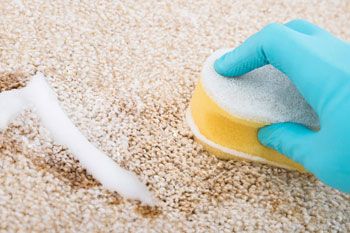
1 - baking soda powder
We buy it in this form. It will have to be used by sprinkling it (small quantities to be distributed as evenly as possible).
You will use baking soda in powder form whenever there needs to be a “contact” action. For instance :
– To absorb odors (contact between the grains of bicarbonate and the ambient air)
– To clean the surfaces (it is often advisable to wet the support – sponge or cloth – to allow the baking powder to adhere)
– To fight against allergens on mattresses, rugs, carpets.
– When mixed with other powders: for the preparation of pastries, mixed with flour for example…
2 - Baking soda in solution
Bicarbonate is perfectly soluble in water, so it's very easy. The hotter the water, and the “purer” it will be, the higher the maximum amount of diluted bicarbonate will be.
In theory, in totally pure water at 20°C, you can dilute up to 87 grams of bicarbonate per liter (this is the theoretical solubility limit of bicarbonate).
In practice, our tap water being generally very calcareous, it can no longer be considered as "pure" water strictly speaking, and it is generally distributed between 10 and 15°C, and we can only dissolve 40 or 50g of bicarbonate per liter (about 3 tablespoons). This is more than enough for almost all uses of bicarbonate in solution:
– For all cleaning and soaking applications (e.g. laundry).
– In the bath (bathtub, footbaths…)
– In the kitchen (dilute it in milk, when you use it to clean or cook vegetables…)
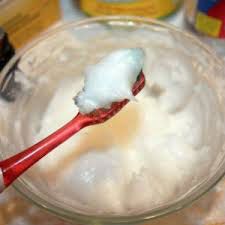 3 - Bicarbonate paste
3 - Bicarbonate paste
Mix about 3 parts baking soda in 1 part water and you will get a paste. This keeps most of the grains present. But they remain bound together by the "saturated" water, in which a small part of the bicarbonate will have dissolved.
In paste, it is the ideal form to apply the baking soda. For instance :
– On the skin
– On the surfaces to be cleaned without scratching them
– In fact, in every situation where you need to adhere the baking soda to a surface.
4 - Bicarbonate in spray or vaporization
Just dissolve the baking soda in the reservoir of a small, clean (or new) sprayer. For the solubility of bicarbonate, refer to use n°2. You will see spraying can be very convenient:
– For cleaning
– For certain body treatments (on the feet for example)
– For the treatment of your plants and other plants (against powdery mildew for example)
5 - Mix the baking soda with other products…
You will find that by mixing the bicarbonate with the vinegar for example, it will then react by "foaming". Mix it with (olive…) oil, clays, liquid soap…. You will see that the fields of application become multiple!
Applications of baking soda
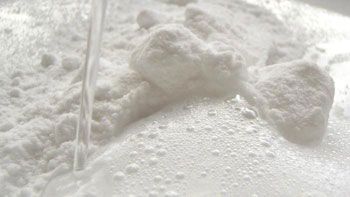
Abrasive, soft and degreasing, it is perfect for scrubbing, scouring a burnt pan, a sink, polishing metal. Since baking soda is soluble in water (but not in alcohol), its crystals dissolve before they risk damaging surfaces. We can therefore adjust the "softness" of the abrasion thanks to the amount of water used: dry, it is slightly abrasive; the wetter it is, the softer it is. Anti-mould and anti-odour, it is the enemy of fungi and bacteria, which die on contact with this alkaline material.
Baking so neutralizes bad odors in depth (without masking them) unlike most commercial products. Theoretically, the finest bicarbonates are the most absorbent. Anti-scaling, bicarbonate softens water that is too "hard" and thus reduces the consumption of detergents. Likewise, it avoids limescale deposits, in machines, on sanitary facilities and on linen.
We have categorized the apps to get you there faster (clickable links) :
For home maintenance
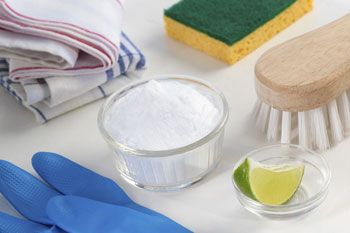
Baking soda is great for:
- Refresh and deodorize armchairs and sofas, rugs and carpets
- Clean washable surfaces
- Make the silverware shine.
1 - Refreshes and deodorizes sofas, rugs and carpets
Baking soda, thanks to its anti-odor properties, is useful for the maintenance of carpets and rugs.
Manual :
1) To deodorize fabric sofas, rugs and carpets and revive their colors, you can sprinkle them evenly with baking soda. Let the product act for 15 minutes up to 24 hours in case of persistent odors. Then vacuum.
2) In case of stains, clean with your usual product, then sprinkle with baking soda. Leave on for at least 15 minutes.
CAUTION: Always test on an inconspicuous surface to test color fastness.
2 - Suitable for all types of surfaces
Its ability to attack grease and its mild abrasive power make baking soda an effective product for cleaning surfaces.
Manual :
1) To clean traces (pencil marks for example) from tiles and washable surfaces, gently rub with a paste of baking soda applied to a sponge (1 part water to 3 parts baking soda). Then rinse and dry.
2) To clean aluminum windows, sprinkle baking soda on a damp sponge and apply it vigorously to the surfaces. Rinse and dry.
3) To create your multi-purpose cleaner: In an empty 1 liter bottle, put 1 tablespoon of baking soda + 1 liter of hot water + 2 teaspoons of white vinegar + a few drops of essential oils from your choice. Mix well and use pure to wash toilets, sinks. 2 caps of this preparation in a bucket of hot water for your tiles.
4) Degrease and clean your oven: Mix a little water + 2 tablespoons of baking soda. Soak a sponge in this preparation and apply to all the surfaces concerned. If the oven door is very dirty, you can also sprinkle baking soda directly on it and then cover with dampened paper towels. Leave to act for about 1/2 hour, remove the towels and wipe with a well-rinsed sponge in clear water.
3 - Restores shine to silverware
The slightly abrasive action of baking soda makes it an effective product for cleaning silverware.
Manual :
1) To shine silverware, sprinkle baking soda on a linen or cotton cloth moistened with water, then rub gently. Rinse and dry with a soft cloth.
2) To restore the shine to silver jewelry, line the inside walls of a container with aluminum foil, fill it with hot water, add a few tablespoons of baking soda and a tablespoon of rock salt. kitchen per liter of water. Immerse the object in
ns this solution for about an hour. Rinse and dry with a soft cloth.
The effectiveness of this technique is due to the electrochemical reaction between aluminum and silver salts. These are reconverted into metallic silver while the aluminum reacts by forming
salts (aluminum is oxidized).
3) For a more thorough cleaning, you can use a paste of baking soda (1 volume of water for 3 volumes of product) to apply to a fabric or to rub directly on the surfaces with a circular motion (helping you to 'a small brush, able to penetrate to
background in the reliefs of the decorations) until the disappearance of the oxidation stains. Then rinse and dry.
CAUTION: It is sometimes recommended to avoid this technique to clean old objects insofar as they can become uniformly shiny afterwards. Some of these marks of time may constitute part of their value. It is always better to familiarize yourself with this method on an invisible part of the object to test the resistance of the silver layer and evaluate the result obtained.
4 - Effective in eliminating odors in :
a- Cabinets
Baking soda is excellent for eliminating unpleasant odors in cupboards, in all containers and in all enclosed spaces (shoe cabinets, kitchen cupboards, etc.). Simply open a box or pour into a saucer the equivalent of 1/2 cup of product (150 g), to be replaced every 3 months. In addition to absorbing odors, it absorbs humidity and creates an unfavorable environment for the development of mold.
b- Ashtrays
Manual :
To prevent the diffusion of tobacco odors from cigarettes and cigars, pour a layer of baking soda at the bottom of the ashtray. To be replaced each time you empty the ashtray.
c- In your living rooms
To create your own indoor air freshener using baking soda, you can do the following:
In a spray bottle, pour 1/2 liter of lukewarm water then add 1 teaspoon of baking soda. Dilute. Then, add 1 teaspoon of lemon juice. To further flavor the preparation, add 4 to 5 drops of essential oils of your choice (lemon, lavender, eucalyptus, etc.) to replace the lemon juice. Shake again and spray to sanitize your interior.
5 - Benevolent towards pets :
a- It absorbs litter odors
Manual :
1) To avoid the development of bad odors from the litter of cats, small rodents and birds, sprinkle a layer of baking soda on the bottom of the cage or tray before pouring the litter.
2) In the same way, to reduce bad smells, it is possible to pour a handful from time to time over the litter, which can then be kept longer.
3) To neutralize the plastic smell of new utensils, you can wash them with a solution of baking soda (3 tablespoons to 1 liter of water).
b- It is ideal for the toilet of our 4-legged friends
Thanks to its ability to neutralize odors, and the fact that it is not irritating to the skin, baking soda is effective for dog grooming.
Manual :
1) To make your dog's coat soft and shiny, add baking soda to his bath water (3 tablespoons per liter of water).
2) Or proceed with a dry wash: sprinkle the dog's hair with baking soda. Rub and brush well to remove grains.
3) To freshen the basket covers, add baking soda (50g) to the laundry by hand, or in the washing machine during the wash cycle. It can also be added during the rinse cycle.
c- He cleans the toys of small animals
Manual :
1) To wash plastic toys, simply immerse them in a solution of two tablespoons (50 g) of baking soda in 1 liter of water. Then rub them with a sponge and rinse them under running water.
2) For fabric toys, sprinkle them with baking soda. Leave on for at least two hours, then brush to remove the product.
6 - It is an ally of the laundry
Baking soda, with its ability to optimize water pH, increases laundry efficiency when added to the wash cycle. It has in fact been established that increasing the pH of the washing bath increases the repulsion between the fibers and the dirt, which favors the removal of impurities. In addition, added to the rinse cycle, it neutralizes and eliminates bad odors, and prevents the deposit of limescale in the fabrics. Its delicacy and softness make it the ideal solution for all linens, underwear and sheets, and in particular those of small children who are prone to persistent odor problems.
a- Increases the effectiveness of liquid detergent
Manual :
For an enhanced cleaning effect, add a tablespoon (25g) of baking soda to the wash or prewash cycle. To save detergent and make your laundry softer, you can also halve your dose of detergent and replace it with baking soda.
b- To remove odors from towels
Manual :
To effectively remove chlorine odors from napkins and hand towels, add 2 tablespoons of baking soda (50 g) to the hand wash powder or during the wash cycle in the washing machine. It is also effective when added to the rinse cycle water.
c- Neutralizes persistent odors
Manual :
1) To effectively neutralize unpleasant odors from fabrics and underwear, add one tablespoon (25g) of baking soda to the rinse cycle. It is ideal for washing sports equipment after intense physical activity or for washing nappies and sheets for newborns.
2) To neutralize odors in the laundry basket, sprinkle the clothes as they accumulate, then proceed with the usual washing without removing the product before putting them in the machine.
CAUTION: Do not use for wool and silk
d- Prevents the formation of tartar
Instructions for use: To prevent the formation of scale in the washing machine, proceed regularly (once a month) to a vacuum wash with ½ cup (150 g) of baking soda.
7 - Removes scale from toilets
Manual :
To remove scale from porcelain faucets and sanitary ware, rub them with a paste made from 3 parts baking soda and 1 part hot water, using a cloth or brush to remove the the most stubborn traces (the addition of lemon or vinegar can further improve the result).
8 - Sanitizes the shower tray
Baking soda creates an unfavorable environment for mold growth.
Manual :
1) To wash the shower stall door, wipe it with a damp sponge sprinkled with baking soda. Rinse and dry.
2) To eliminate traces of mold on the anti-slip mat, sprinkle with baking soda, leave to act for a few minutes. Rub with a sponge, rinse then dry.
3) To wash and deodorize the shower curtain, rub it with a damp sponge sprinkled with baking soda. Rinse then dry.
4) Or put it in the machine by adding 3 tablespoons (75 g) of baking soda to the wash cycle (choose the “delicate wash” cycle).
9 - A bathtub with enhanced hygiene
Instructions: To clean the bathtub (even fiberglass), sprinkle it liberally with baking soda. Then rub the surfaces with a damp soft sponge. Rinse and dry with a tissue.
10 - Effective against sanitary odors
Instructions for use: To deodorize and avoid lingering odors in sinks, bathtubs, shower trays, pour ½ cup of baking soda into the siphon. Run hot water through it.
For health and well-being
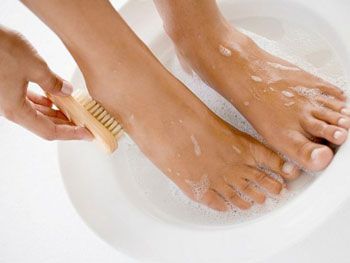
1 - A relaxing bath
In warm bath water, baking soda leaves the pleasant feeling of smooth and supple skin. You will also experience a delicious feeling of lightness and well-being.
Directions: Dilute ½ cup (150 g) of baking soda in a tub of hot water at 37-40°C.
2 - An emollient foot bath
Diluted in the water of the foot bath, baking soda brings a feeling of well-being to the feet and legs. In addition, rubbing the calluses with a paste made of moistened baking soda promotes the removal of dead cells and makes the skin more supple.
Instructions for use: Dilute 2 tablespoons (50 g) in the hot water of the foot bath.
3 - Oral hygiene
The food residues that settle between the teeth, as they break down, release acids that attack the enamel and promote the appearance of cavities. As a buffer substance, baking soda neutralizes these acids. Used as a mouthwash (mouthwash), it freshens the breath by eliminating unpleasant odors that have acid (garlic, onion) or strongly basic (fish) origins. Thanks to its delicately abrasive action, it can also be used to whiten teeth, gradually eliminating stains caused by cigarettes and coffee.
Manual :
1) For mouthwashes: dilute 1 teaspoon (5 g) of baking soda in a glass of water.
2) To whiten teeth: baking soda is an abrasive that restores the enamel to its full shine. Just sprinkle it on your toothbrush, possibly add a little lemon juice and brush your teeth normally. But be careful not to renew too often to preserve the enamel. Dampen your toothbrush, sprinkle some baking soda on it and brush your teeth as you would with regular toothpaste.
4 - Cleaning toothbrushes and dentures
Manual :
1) To clean the dentures, immerse them for 30 minutes in a glass of water in which you have added, in addition to your usual cleaning product for the dentures, a tablespoon (25 g) of baking soda. Then rinse well with running water.
2) To clean the bristles of the toothbrushes: let them soak overnight in a glass of hot water in which you have added a tablespoon (25 g) of baking soda.
5 - A manicure aid
Baking soda can be used for hand care, as it helps to maintain supple skin, and it can also be useful for nail hygiene.
Directions: For soft hands, dilute 2 tablespoons (50 g) of baking soda in 1 liter of lukewarm water and immerse your hands for 10 minutes. Then proceed to the manicure.
6 - A deodorant for shoes
Instructions: To deodorize, sprinkle baking soda inside the shoes (avoid doing it directly on the leather, which could dry out). Leave it on overnight before removing it. In addition to fighting odors, it makes the inside of shoes less conducive to the development of certain microscopic fungi and molds.
7 - A delicate peel
Baking soda, in the form of a paste soaked in water, can be safely used to remove impurities and dead skin cells from the face.
Instructions: After washing the face with your usual soap, apply a paste made of 3 parts baking soda and 1 part water. Massage gently, without pressing too much, in small circular movements. Then rinse gently with water.
8 - Supple and shinier hair
Instructions for use: To make the hair silkier and more easily remove product residues that adhere to it (hairspray, gel, etc.), add once a week 1 teaspoon (5 g) of baking soda to the shampoo usual. Massage and rinse, then apply the balm.
9 - Cleaning hairbrushes and combs
Instructions: To clean the combs and brushes, immerse them in a container full of hot water in which you have dissolved a few spoons of baking soda. Leave on for a few hours then rinse.
10 - To help digestion
Baking soda is a natural neutralizer. It is defined as “a buffer substance”, capable of maintaining the pH of solutions at 8; it can thus neutralize the acidity attacking your stomach and thus relieve heartburn. If you have trouble digesting after a heavy meal, drink a glass of water in which you have diluted a teaspoon of baking soda.
In the kitchen
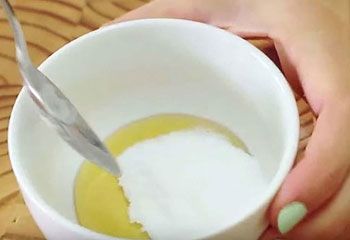
1 - Removes impurities from fruits and vegetables
To remove impurities, waxes and other possible residues, do not forget to wash fruits and vegetables thoroughly with water containing baking soda before consuming them.
Manual :
1) To clean leafy vegetables (salads, endives, spinach, etc.) or fruits with delicate skins (strawberries, cherries, grapes, etc.), soak them for about ten minutes in a solution consisting of one tablespoon (25 g) of baking soda per liter of water. Then rinse thoroughly with running water.
2) To wash other types of vegetables without leaves (tomatoes, fennel, zucchini...) or fruits with resistant skins (peaches, apricots, etc...), it is possible to use baking soda under form of paste (1 volume of water for 3 volumes of powder). In this case, rub the surface of the fruit directly with a small sponge or with your hands. Then rinse under running water.
2 - Ideal for pre-washing pots and pans
The delicately abrasive action and softening properties of baking soda make it a valuable ally in the kitchen. Pans and dishes regain their shine and lose their bad smells.
Manual :
1) To effortlessly remove encrusted deposits, sprinkle baking soda directly on the dirtiest surfaces, and add hot water. Leave on for at least 15 minutes, then cleanse and rinse.
2) For the most resistant deposits, rub with a damp sponge sprinkled with baking soda. Wash and rinse.
3) You can also fill the dish or pan with water and 2 tablespoons of baking soda and bring the solution to a boil for 5 minutes. Leave to cool and remove the cooking residue with the help of a wooden spoon or a sponge. Then wash and rinse.
3 - Makes the sink shine without scratching it
Baking soda crystals, unlike other powders found in some cleaning products, are soluble and therefore not hard enough to scratch delicate surfaces. The cleaning of the sink can thus be carried out every day.
Directions: To shine enamel or stainless steel sinks, rub the surfaces with a paste made from 3 parts baking soda and 1 part water, applied to a sponge. Rinse, sponge and dry. To avoid odors under the sink, put a jar of baking soda in it open, to be changed every 3 months.
4 - Effective in deodorizing dishes, dishes and cutting boards
Added baking soda to the usual dishwashing product, it makes it more effective while eliminating any residual odors. By combining with the residues of acidic and basic substances that generate bad odors, baking soda is able to neutralize them.
Directions: To remove food residue and neutralize odors, add the equivalent of two tablespoons (50 g) of baking soda to the wash water. Or use it as a paste on a sponge (1 part water to 3 parts baking soda by rubbing the dishes or cutting board.
5 - Thoroughly cleans the hob and all surfaces of the kitchen and domestic equipment
Manual :
1) To remove all traces of food and grease encrusted in the hob or neutralize garlic and onion odors, simply sprinkle baking soda on a damp sponge. Scrub then rinse with water.
2) To clean the oven, the microwave, the barbecue grills and the exterior walls of domestic equipment, use a solution of water and baking soda (the equivalent of 2 tablespoons – i.e. 50 g) to pass over the surfaces. The oven cleans even better when it is still warm.
3) If stubborn odors remain in the oven or microwave, you can leave a box or a cup of baking soda open to remove before the next cooking.
6 - Cleans the fridge or freezer
Manual :
1) To clean and deodorize the inside of the refrigerator or freezer, use a solution of 2 tablespoons of baking soda (50 g) per liter of water to pass over the walls with a sponge. Rinse then dry.
2) It is also possible to soak the plastic parts in a baking soda solution for half an hour.
3) To remove stains or traces of mold from the fridge or freezer, you can also use a paste (3 parts product to one part water) or sprinkle a damp sponge with baking soda.
7 - Cleans glass and plastic containers
Manual :
1) To clean containers that have held oil and vinegar, insert
in a small amount of baking soda, shake well to allow the product to absorb well. Then wash off.
2) To clean plastic containers, baking soda can be used in the form of a paste (1 part water for 3 parts product) to be applied with a sponge or cloth. Wash and rinse.
8 - Prevents the formation of odors and neutralizes them
a- In the fridge and freezer
A large part of the unpleasant odors present in refrigerators and freezers arise either from acidic substances, such as milk, or from basic substances, such as fish. The baking soda combines with the molecules of these foods present in the air, and neutralizes them.
Directions: To neutralize odors, simply put an open can (or corresponding container) of baking soda in the fridge or freezer. The important thing is to ensure a sufficient contact surface with the air. The reappearance of odors can sometimes be explained because the product has exhausted its absorption properties. In this case, it will have to be changed more frequently.
b- In the dishwasher
Directions: To avoid bad smells, sprinkle a large amount of baking soda directly on dirty dishes and activate the pre-wash cycle. To increase the performance of your usual product, simply add 2 tablespoons (50 g) of baking soda during the wash cycle. To deodorize and degrease the dishwasher, periodically add baking soda (100 g once a month) to v
ide during the rinsing phase, which guarantees good maintenance of the appliance. To complete the operation, do not neglect the cleaning of the filter (every 15 days), for which baking soda can also help you.
c- In the garbage bag
Baking soda is also able to neutralize bad odors in the trash.
Manual :
1) Sprinkle it in the bottom of the bin before placing the plastic bag.
2) Pour some directly into the bag as it fills with trash.
9 - It is a valuable ally for cooking food
During cooking: add ½ teaspoon of baking soda per liter of water before cooking the vegetables.
a- Useful for cooking vegetables
1 teaspoon (5 g) of baking soda added to the cooking water for the vegetables allows: 8
- to preserve the colors
- to avoid the unpleasant odors of certain vegetables which are dispersed in the house (cauliflower...)
- remove the bitter taste of turnips
- to tenderize the cabbage and prevent it from going soft
b- Neutralizes the acidity of tomato sauce
How to use: To make the sauce less acidic, it can be used instead of sugar. Just add the tip of a teaspoon of baking soda while cooking. This can be useful for ready-made sauces (but these are often already processed) as well as for homemade preserves.
c- Tenderizes the meat
Directions: To make boiled meat more tender add ½ tablespoon of baking soda per liter of water at the start of cooking.
d- Eliminates the strong taste of game
Baking soda is useful for preserving and preparing game, as it reduces the strong taste of certain meats.
Manual :
1) When meat is left to season, sprinkle game cavities with baking soda to reduce odors. When the meat is veneered, it can either be stored in the freezer or cooked (after being rinsed dry).
2) Before cooking: if the meat, after aging, has not been sprinkled with baking soda, it can be soaked in water with baking soda (overnight in the refrigerator). Before cooking it, it is good to drain it and dab it with a clean cloth.
d- Promotes the rising of the dough
Baking soda is well known for helping pastries and pastries rise, while making them moist and flavorful. Indeed, baking soda has a leavening action, so you can substitute it for yeast (1/2 teaspoon for a cake). A leaven. If mixed with a product with acid characteristics, such as milk, vinegar, lemon juice, or heated to a temperature of at least 70°, the bicarbonate undergoes transformations, generating carbon dioxide, CO2, which is in turn absorbed by gluten. If you use it in the preparation of your pies and desserts, you will increase the volume.
CAUTION: Baking soda cannot replace baker's yeast.
It is possible to prepare your own yeast at home by mixing the following ingredients:
1) ½ teaspoon baking soda and ½ teaspoon cream of tartar.
2) or ½ teaspoon of baking soda with 125 g of yogurt.
3) or ½ teaspoon of baking soda with ½ teaspoon of vinegar or lemon juice and 100 g of milk.
e- A pinch of baking soda is also useful for:
- obtain softer omelettes (a large pinch for 3 eggs)
- lighten the puree (add when stirring)
- avoid the crystallization of syrups
10 - Ingredient of choice for preparation of unaltering drinks
Direction of employment :
(1) To get a more limpid tea, add a pinch of soda bicarbonate at the time of infusion.
(2) To prepare a sparkling and not too acidic drink, add 1⁄2 teaspoon of baking soda to a glass of orange juice, grapefruit or lemon.
For the garden
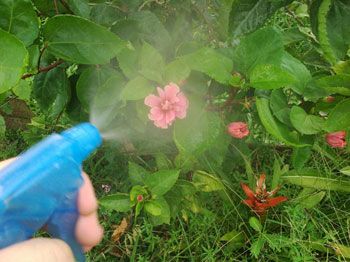
1 - Extend the life of a bouquet of flowers,
Instructions for use: mix a coffee spoon of bicarbonate in the water, change the mixture every 2 days.
2 - Degreasing and cleaning the barbecue
The soda bicarbonate, thanks to its delicately abrasive power, is able to eliminate the food residues of the barbecue without scratching the plates or grids.
Direction of employment : To remove food residues and burnt greases from plates and grids or eliminate residual odors, rub with a baking dough of soda (1 volume of water and 3 volumes of powder) on a sponge or on a brush with hard hair in case of tenacious deposits. Then rinse and dry.
3 - Clean garden furniture
Direction of employment : To remove the deposits and tasks of plastic garden furniture (seats, table...), clean them with hot water, added with soda bicarbonate (2 tablespoons (50 g) per litre of water). Rub, then rinse. To avoid the smell of mould and enclosed during storage during the bad season, sprinkle the cushions and inside the soda bicarbonate crate.
4 - Good weeding
Soda bicarbonate can also be a precious ally in the maintenance of the garden. Sprinkle between the stones or slabs of the way, the terrace or the patio, it slows down the regrowth of unwanted herbs. And it is an ally against certain parasites.
Direction of employment : To discourage plant parasites, mix 1 teaspoon (5 g) of soda bicarbonate and 3 tablespoons of olive oil. Pour two teaspoons of this mixture into a cup of water (equivalent to 0.3 litres) and moisten the plants with a vaporizer by avoiding putting them directly on the flowers. Repeat the operation every 20 days.
5 - Natural Insecticide
Spray to the necessary places: 20 cl of water + 1 teaspoon of bicarbonate + 3 olive oil.
6 - Plant and garden care
If your garden needs a little boost, try either of these tricks. Before using your sprayer, add 1 teaspoon of soda bicarbonate for 4 litres. He has excellent fungicide action. Soda bicarbonate will help you test the acidity of the soil in your garden. Remove the value of a cup of earth and put it in a bowl. Add 2 cups of water and mix with 1⁄2 cup of soda bicarbonate. The amount of bubbles will indicate acidity. If you discover that your soil is too acidic, you can significantly reduce this acidity with soda bicarbonate to have a more beautiful garden. Enter a bunch of soda bicarbonate. Tests will be required before finding the right proportion to the soil surface. Once you find the solution, you will be impressed by the results: less weeds, more numerous and more beautiful flowers, more beautiful vegetables...
Check acidity after one month using the above method.
ATTENTION TO SURDOSE: You might find yourself with too alkaline soil.
7 - Black spots, brown spots or other fungal diseases?
Soda bicarbonate applied on the leaves makes them less acidic. This limits the development of mushroom spores. This treatment is suitable for vegetable gardens, fruit trees, or flowers.
Instructions for use: Mix 5 coffee tablespoons of soda bicarbonate for 4 litres of water. Add a litre of Marseille liquid soap for overbrush action and spray on affected plants. You can also use this mixture for soil, but as indicated above, check first if your soil is acidic. This method should remove most fungal problems. For better results, sprinkle plants generously two days before spraying. Spray a little concentrated mixture of soda bicarbonate around your tomato plants. This removes the pests and reduces the acidity of your planting. Build a barrier against pests. Trace a continuous line of soda bicarbonate around the plants.
8 - Clean your Jacuzzi
Use soda bicarbonate to clean your jacuzzi. Fill a hot water bucket with 1 glass of baking soda for 4 litres. With a fringe broom, clean the inside of the jacuzzi to keep it clean.
For the car
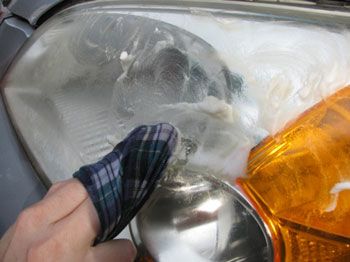
- it eliminates stains and dirt
- it deodorizes the inside of the car
- He's cleaning the bodywork.
The bicarbonate of soda, thanks to its delicately abrasive power, is able to eliminate the very tenacious traces such as mud, resin, fats of the surface of lighthouses, rims, windows, bumpers and bodywork and without scratching them.
How to use: to remove the most resistant traces and spots, rub with a baking soda on a wet sponge (1 volume of water for 3 volumes of powder). Rinse and wipe with a soft cloth.
1 - deodorizes the passenger compartment
How to use: to deodorize seats and carpet, sprinkle them evenly with soda bicarbonate. Allow for at least 15 min, longer in case of persistent odors. then suck with the vacuum cleaner. the result will be even better if you brush after sprinkling, to penetrate the soda bicarbonate grains into the fibres. to remove stains from the seats in fabric and fabric, follow the manufacturer's advice. to complete your cleaning, sprinkle the surface with soda bicarbonate. then let act at least 15 min before you pass the vacuum cleaner.
ATTENTION: Always do a preliminary test on a hidden surface to test the color resistance to eliminate the smell left by cigars and cigarettes, pour soda bicarbonate into the bottom of your car’s ashtray, and renew the operation every time you do it
empty. you can also clean it with a wet sponge sprinkled with soda bicarbonate. Rinse and wipe.
For the campsite
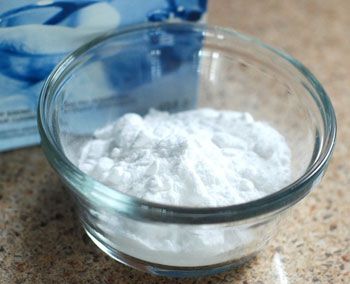
1 - elimins the smells of the tent and sleeping bag
Use: to avoid the development of moulds and the smell of moisture on the sleeping bag and the tent, sprinkle them with soda bicarbonate before storing them in the trunk. It is also possible to do so before using them to eliminate odours due to the storage period: sprinkle with soda bicarbonate, let act at least one day then shake or aspire before using them.
2 - cleans the bags, containers and ice-creams of the picnic
1) to clean and neutralize the odors of the insulated bag and ice tray, soak them in a solution of hot water and soda bicarbonate (2 tablespoons – 50 g – per litre of water).
2) to remove stains, food residues and mold traces, you can also use it as a paste (3 volumes of powder for 1 volume of water).
The conservation of soda bicarbonate
Soda bicarbonate can be kept as long as you want. It is a product that has no expiry date.
But so that your bicarbonate can hold so long, I advise you to put it in a box or in a hermetic plastic bag. You can keep it for several years. Avoid keeping it in its original packaging if it is kraft paper. When you use it, make sure to close your box or bag properly after use and not store it in a too wet atmosphere.
If it is not locked in a hermetic packaging, it may absorb all odours and humidity. bicarbonate will become unusable.
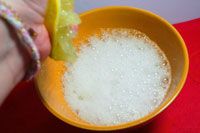
Trick to know if the bicarbonate you own is still good:
Pour 1 pinch of bicarbonate into a glass and add a few drops of vinegar or lemon juice. If an effervescence is created, it's still good. If this is not the case, your bicarbonate is no longer very operational !





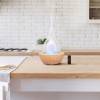
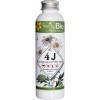
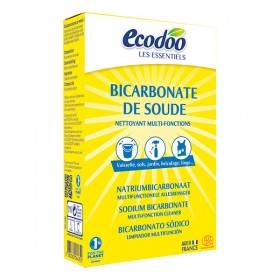
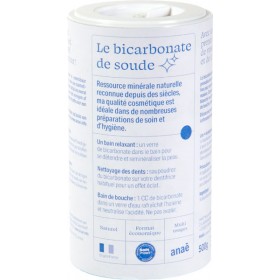
Customer reviews
Parfaitement parfait, je ne me fournis que chez Penn'ty bio depuis qu'ils m'ont débarrassée de punaises de lit.<br />
MARIE CLAUDE G.
Colis parfaitement emballé et produits conformes. 1 des produits était très fragile et est arrivé en excellent état, merci :o) Pourquoi achetez à l'étranger alors qu'on a de si belle s entreprises en France? Tarifs identiques ou moins chers que chez Amazon ;o)
Stéphane C.
Très bien !
XX
La livraison est rapide, je n'ai jamais était déçue de ce site, et les produits sont pas chers et de très bonne qualité!
Patricia
On ne peut pas toujours faire confiance à des sites de ventes sur le web, mais sur Penn'Tio, j' y viens les yeux fermés. Excellente communication avec le service clientèle, un suivi sérieux. Je remercie chaleureusement toute l' équipe.
Sergine T.
Envoi très rapide, personnalisé et soigné. Merci
XX
Très contente des produits de qualités et une commande reçu très rapidement. Merci
PATRICIA A.
Une boutique en ligne, sympa et très réactive. On apprécie surtout la livraison express. Pas besoin d'être américain pour livrer dans des délais de champion !<br /> <br />
Daniel de Paris
Tout était parfait. Produit, prix, délai.
Marco
J'ai passé ma première commande, chez vous il y a trois jours à peine et ce matin, je reçois mon colis.
Sophie
Diffuseurs qui sortent vraiment de l'ordinaire, un envoi parfait - merci BCP
Anthony
MOI JE DIS INCROYABLE !!!<br /> Plus que mieux d'une rapidité de dingue ! bravo et le colis impeccable surprotégé.<br /> Que toutes les entreprises prennent exemple sur vous. merci
AURELIE A.
Site pratique, compétent, prix corrects. Un envoi très rapide, et je dirai "parfait".
Greg
Sav très réactif et efficace suite à avarie durant transport. La livraison du produit en remplacement du colis défectueux à été particulièrement rapide. Merci.
Valérie
Très bon site avec de très bons produits et un soin particulier apporté à la préparation de chaque commande... De plus, Sophie et Quentin prennent la peine d'écrire un petit mot de remerciement avec la commande envoyée....c'est peu commun mais très sympa....:-)
STEPHANE P.
Merci pour cette première commande, envoyée très rapidement, et dans un petit colis, avec frais de port très raisonnables.
Valérie O.
Commande bien reçue ! Bien emballée ! ! ! Jolis produits ! Merci !
AYH
Noëlle G.
j'ai reçu mon colis aujourd'hui, merci c'est très rapide et sérieux.
Clara
Une utilisation de vos produits a suffit pour nous débarrasser des poissons d'argent. Merci.
Matthieu
Penn' Ty Bio, c'est ma référence depuis 10 ans au moins. Je ne commande mes produits de toilette et d'entretien que chez eux. Les marques et le service est irréprochable.
GAELLE
Bon site, fiable, rapide et efficace.
Leo L.
Commande facile, livraison impeccable et produits fiables. Merci.
Isabelle
Très satisfaite de ma commande. Emballage soigné et envoi rapide. Merci beaucoup pour votre professionnalisme !
Sophie
Bon produit mais frais de port un peu cher.
Marie Paule
Efficacité redoutable. enchanté.
Robert
Penn'Ty Bio wonderfully served our family in Switzerland so that we could try the range of Totemsavon products, which are such caring, loving, and consciously manifested creations :)<br /> <br /> By allowing a shipment to Switzerland and elsewhere, I am sure so many more people would be able to benefit from the beautifully selected product portfolio in Penn'Ty Bio and all, together, make a conscious leap by using and demanding a way more purer approach to anything we interact with.<br /> <br /> Thank you so so much Penn'Ty Bio!<br /> <br /> In 8 Love We Heart Trust<br /> <br /> Miguel Ángel
Miguel Ángel
Parfait. Rien à redire. Extrêmement efficace.
Quentin
Très contente de vos produits.
nathalie G.
Livraison rapide , produits de qualité, je recommande Penn'Ty Bio.
XX
Très bien , bon produits, La prochaine commande avec plaisir, livraison très rapide.<br />
Rainer
produit parfait.
René
Rapidité, emballage nickel et écologique, mot de remerciements personnalisé, produits au top....j adore....je suis une nouvelle cliente conquise. Un grand merci...
Hélène P.
1ère commande. Très satisfaite : Colis expédié très rapidement et bien emballé. Merci pour votre sérieux.
Ghyslaine
Maryse
Bons produits conformes à mes attentes et livraison au top. Je recommande vivement.
Chantal P.
Bonjour Monsieur,<br /> Nous nous étions parlés au téléphone il y a quelques années. Bravo pour l'évolution de votre site et vos dossiers instructifs. Vos produits aussi sont très bons. Bonne continuation, bien cordialement.
Marina
Je vous remercie beaucoup de m’avoir fait profiter d’un acheminement par Colissimo alors que rien ne vous y obligeait, sauf votre conscience professionnelle, chose rare de nos jours et qu’il ne faut jamais manquer de souligner.
Cécile
Bon produit, efficace et laisse une odeur plutôt agréable. Expédition rapide, emballé avec soins. Je recommande
Mary
Toujours impeccable, les produits, les services. Depuis que j'ai changé de facteur, plus de soucis. (Ça n'est arrivé qu'une fois!!!)
XX
Très bon site, très sérieux je recommande, produits de qualité et service après vente au top, de plus livraison des plus rapide et produits très bien emballés, tout est parfait
virginie
Cliente depuis plusieurs années, j'apprécie toujours ce site. Meilleures salutations.
France
Livré hyper vite. Bravo !
Mick
Comme toujours service "au top" réactivité, qualité produits... BRAVO et merci pour la qualité de votre travail
Annick
bravo pour votre réactivité et la qualité des produits
Annick P.
Très bons produits efficaces.
XX
Efficace, livraison rapide.<br /> <br />
H
Un diffuseur plus de 80 M², avec huile essentielles eucalyptus, vraiment formidable, on respire mieux et çà sent super bon. Le matin 1 heure, et le soir 2 heures. De jolies couleur, et pour les fêtes une jolie ambiance. Bravo.
PATRICK
Je suis vraiment très satisfaite de la prestation de ce fournisseur : délai de livraison très rapide et emballage des produits réalisé avec un maximum de soin. Bravo !!
Eliane
Cliente fidèle depuis plusieurs années, je ne peut que recommander ce site. Tout est parfait. Tous les produits au top, rapidité d’envoi, gentillesse, allez y les yeux fermés vous ne serez jamais déçus.
Marité 06
Dimanche soir, invasion de vrillettes du pain. Lundi matin, commande en urgence des produits verts adéquats. Mardi, livraison, traitement et fin de l'invasion.
Jean-Pierre
Claudine
Très bon site. Navigation facile. Les commandes sont expédiées rapidement comme annoncé. Aucun problème depuis que je suis cliente. Je recommande Penn'ty bio.<br />
Elvyne
colis reçu ce jour, merci pour le flacon offert
Andrée
Livraison très rapide; Tout était parfaitement emballé. Je referai appel à vous.
JV39
L’esprit commerçant de proximité chez un vendeur en ligne !
Philippe
très bien livraison dans les délais, colis intact, bon produit.
Martine
BIEN,CONTINUEZ COMME çà.
XX
sérieux
XX
Juste un petit mot pour vous remercier du message accompagnant mon colis ! Je croise les doigts pour que les produits marches mais entre-temps, je voulais vous remercier et en profiter pour vous souhaiter à mon tout un joli printemps.
Rose B.G
Merci pour votre efficacité et votre gentillesse, commande, livraison, petit mot agréable, tout était parfait !
Sylvie
C'est extrêmement délicat de votre part d'avoir fait diligence. Je ne manquerai pas de recommander votre site et de souligner votre gentillesse. Encore merci
Michel
J'ai bien reçu le colis sans aucun problème. Merci pour la rapidité et le sens du service.
Nicolas
Livraison express. Colis toujours aussi bien préparé (cales, flocons, adhésif sur les bouchons qui risquent de couler). Bravo pour votre professionnalisme.
Isabelle
Beaucoup de soins dans la commande reçue. Je recommande!
XX
Content des produits achetés, reçu rapidement et bien emballé. Merci.
XX
merci pour votre professionnalisme. Merci pour les produits envoyés dans de bons délais. Merci pour la qualité de vos produits
Marcelle
Je parlerais de vous a mes amies car vos produits sont vraiment excellents. Bien a vous et tous mes remerciements.
Patricia
Rien à redire, de la commande à la livraison.
XX
Jean-Yves
Super, livraison rapide, suivi très rigoureux, site de confiance, très sérieux à recommander... Merci pour tout.
Bernard
Envoi très rapide et bravo pour votre site de reconnaissance des insectes nuisibles.
Brice
Satisfaction totale. Entreprise au top. J'ai téléphoné le lundi matin, malgré que les contacts téléphonique ne sont que l'après midi, une personne très charmante m'a rappelé presque aussitôt pour mes donner les infos que je souhaitais connaître sur ma commande. Bravo. nous sommes mercredi et ma commande est arrivée. Encore bravo continuez comme ça.
Jacques M.
Très bien...merci.
Olivier
Un grand merci pour votre professionnalisme et la qualité de vos produits. Longue vie à votre site.
XX
Colis bien arrivé. Emballage remarquable. Diffuseur très joli, très efficace et peu bruyant avec de la couleur qui change. Très satisfaite de la commande.
Sabrina
Bon produit. Merci Penn'Ty Bio. Un seul passage dilué à 5% et les puces ont disparus. Il en restait deux ou trois qui ont dû se perchés pendant le traitement mais sinon c'est performant.
Axel
Boutique très sérieuse avec un envoie rapide et des produits super efficaces.
XX
Super !
Yann
Produits facile à utiliser, efficaces et finalement pas plus onéreux, à l'usage que des produits issus de la pétrochimie. Service livraison impeccable. Je recommande +++<br />
XX
Toujours très bien et parfaitement emballé ! Merci<br />
Valérie
Service de qualité, suivi rigoureux et rapidité au rendez-vous. Mon colis est arrivé vite même avec un paiement par chèque. Les produits sont très fidèles à leur description et pour un coût serré. A recommander fortement.
Vincent
Service de qualité, suivi rigoureux, et rapidité au rendez-vous. Les produits sont très fidèles à leur description et pour un coût serré. A recommander fortement.
JACKY
Bravo pour votre sérieux. Colis reçu très vite et produits impeccables. Belles fêtes de fin d'année
Mat
Produit conforme aux attentes.<br /> <br /> <br /> <br />
Alain
Prix intéressants. Expédition super rapide à bon prix. Et tout ça de façon agréable !
Alexis M.
Très bons produits, service rapide et de qualité, rapport qualité/prix intéressant. Je recommande vivement.
Alain
Bravo et merci : produits de qualité et service TOP... continuez !...
XX
Bravo ! je vous félicite pour votre efficacité ne manquerai pas de vous conseiller. Merci à la prochaine commande
Anthony
Super produits accueil plus que parfait gentillesse. Livraison au top merci beaucoup
Christiane
Je tenais à vous remercier pour la commande que je viens de recevoir ce matin. Merci beaucoup et je n'hésiterai pas à recommander sur votre site.
Sandrine
Produits d'excellente qualité, arrivés rapidement, et conformes à leurs descriptions.
Michelle G.
Produits de bonne qualité, naturels et efficaces, expédition rapide et bien emballée, sav très rapide suite à une erreur de ma part,
XX
Parfait! Préparation et expédition de la commande hyper rapides. Emballage très soigné (j'ai acheté un produit fragile). <br /> Je suis très satisfaite!
Elise M.
je vous remercie pour vos services, c'est très agréable d'être informé de la sorte. colis bien reçu Merci pour la rapidité de la livraison
Bernard
Je viens de recevoir la pastille noire aujourd'hui et je vous remercie de votre envoi gratuit (ce qui est rare de nos jours).
Laurence
Client depuis des années Produits de qualités et surtout qualité de service.
XX
trés satisfaite de ma commande,( produit, et livraison,rapide ) MERCI
Danièle M.
Merci pour le geste commercial, et aussi pour les nombreux conseils et l'excellent service client.
Tristan L
Juste un petit mot pour vous remercier de votre disponibilité et pour vous dire également que je suis très satisfaite des produits que j'ai acheté, ils sont vraiment efficaces.
Barb.
Merci à Penn'Ty Bio pour la qualité des produits, la réactivité de l’Équipe et le petit mot attentif qui accompagne les colis. Votre site est précieux !!
Veronique B.
colis dans les temps,emballage parfait,super accueil téléphonique pour renseignement, je recommande ce site.
ROSCO
Des produits très efficaces quand on suis dans l'ordre le traitement. Un léger petit bémol sur le spray insecticide, si possible essayer de trouver un spray plus puissant et plus large pour une diffusion optimale dans les coin et recoin inaccessible. Sinon tout est nickel est une excellente qualité de résultat.<br /> PS: Il faut prendre tout les produit pour un traitement efficace en foyer privé (maison).
Florian G.
Marie Aline Roux
Fidèle à votre marque, je tenais par ce mail à vous féliciter vous et votre équipe pour votre longévité. Votre marque est toujours gage de qualité et sérieux.
Céline
Bon choix, bons conseils et service livraison très rapide. J'aime faire mes courses sur ce site.
FDA
Après la découverte des punaises de lit dans 2 chambres de notre vieille maison, j'ai trouvé votre site. le dossier m'a été très utile et je suis très contente d'avoir trouvé des produits moins toxiques que ce que proposent les autres sites de vente.<br /> Je vous remercie d'avoir répondu à mon mail car c'est un peu l'affolement quand on découvre chez soi des punaises de lit.
Françoise S.
Très réactifs entre la commande et la livraison. Je suis toujours satisfaite de mes commandes soigneusement emballées !
France L B
Excellent service et livraison rapide. A conseiller pour la santé des animaux (chiens et chats)
MICHEL
fiable et de bonne qualité pour les services et les produits :)
XX
Très satisfaite par Penn ty bio. En effet, suite à un produit défectueux ( housse matelas) , j'ai aussitôt reçu un bon de retour pour renvoi gratuit en colissimo et ai reçu la nouvelle housse dans les 48 h, avant même le renvoi de la première housse. Merci pour la réactivité et la confiance de cette entreprise.
dominique B.
Je trouve l'essentiel sur le site à des prix défiants toute concurrence. Continuez comme cela.
XX
Sophie. A
Je me permets de vous écrire un petit mot afin de vous dire que votre site est très bien fait.
Tom
Livraison rapide, emballage plus que parfait, le diffuseur NEOLIA est merveilleux pas bruyant, fonctionnement idéal. Merci PENNTYBIO pour votre sérieux, site web à recommander.
CLAUDE
Parfait ! Envoi rapide et produits de qualité. Merci pour le petit mot. Je suis très satisfaite !<br />
Julieanaïs
Entièrement satisfaite.
Ch. D.
Efficace rapide et à l'écoute. Diversité des produits. Efficacité des produits. Respect des délais de livraison et prise en compte des spécificités client PMR ( ce n'est pas toujours le cas). Site bien fait pour navigation et produits bien mis en valeur. Des promos et des bons de réduction cumulés en fonction des achats. Merci pour votre efficacité rapidité et professionnalisme.
xxx
Site de grande qualité !
Rose Anne Marie
Super produits, envoi rapide et soigné, conseils et échanges courtois ! Une jolie boutique en ligne pour acheter en toute confiance ! <br />
Patricia
Service rapide et efficace. Et Sympathique ! toujours un petit mot, ça fait la différence. Et c'est français en plus :). Je recommande.
XX
Très satisfait du site livraison rapide.<br />
Michel
C’est la première fois que je commande sur ce site et pas déçue livraison rapide de ce produit que l’on ne trouve pas partout. Je recommande
Patrick
Merci pour votre geste que j’apprécie.<br /> Cela fait plaisir de retrouver l’esprit commerçant de proximité chez un vendeur en ligne. Je surveillerai attentivement cette nouvelle livraison.
Philippe
J'adore. Très grande diversité de produits, les explications sont simples et complètes.Quand aux colis, ils sont extrèmement bien protéger. Un grand merci.
Nadine
Hélène
En cette période d'avant Noël, je craignais que me colis arriverais en retard. 48h après mon achat, c'était dans la boîte aux lettres. Du coup, je suis large pour mettre mon achat sous le sapin. Merci à vous
Art4
J'adore ce site qui fait un vrai travail de sélection de produits que je ne trouve pas ailleurs et sur une large gamme. Je recommande.
Veronique G.
Très bien, je recommande cette boutique
Salomé
Livraison rapide et bien emballé. Petit message manuscrit qui fait plaisir :)
xx
Je suis cliente depuis de nombreuses années. Toujours satisfaite du site, des produits et de la livraison.
martine O.
Cliente depuis plusieurs années. Super service, réactif, cordial. Les produits sont excellents.
Christine
Un grand merci pour la qualité et la rapidité de votre réponse.
Simon
Suite à un précédent message notifiant une erreur de produit à la livraison, Penn'Ty bio m'a fait parvenir à titre gracieux le bon produit. Merci
Martine
Commande reçue assez rapidement. Merci pour votre sérieux.
Émilie
anne-marie B.
Ravie de découvrir un site qui présente des produits de qualité avec une vraie démarche éco responsable à des tarifs intéressants.
XX
Produits utilisés depuis très longtemps, toujours la même qualité ! Je recommande, les délais de livraison sont très courts, produits très efficaces.
Laurence
Un grand merci pour cette commande envoyée très rapidement. Je recommanderais votre site
Elise
Très satisfaite. Merci.
CM
Bonjour Sophie & QUENTIN, Merci pour votre petit mot. . . . Ça fait chaud au Cœur de voir qu'il y a encore des Gens Comme VOUS sur cette planète ! Le monde devient de plus en FOU ! ! ! Cordialement.
Dominique T.
J'ai bien reçu ma commande. Com' dab' , rapidité efficacité ...Merci
Sally
Merci beaucoup pour l'info, c'est rapide chez vous, très appréciable!
Denis
Dommage, les vendeurs ne savent pas lire les indications inscrites sur les produits qu'ils vendent
XX
Efficacité de la livraison , très rapide . Produits livres en parfait état . Très bien emballés . Merci.
Geneviève
Site intéressant. Je l'ai découvert, en fait. Produits ménager éco-responsable. Bon pour la maison et non agressifs. Merci.
Mydiadao
Site très sérieux et personnel vraiment agréable. Envoi rapide. C est parfait !
Ingrid
Excellents services, très serviable
XX
Livraison très rapide et produits intacts à l'arrivée grâce à un emballage impeccable.
Etta
Les produits commandés sont conformes à mes attentes. Quant à l'accueil au téléphone, il est parfait et nous avons toujours trouvé un terrain d'entente. Je fais confiance à Penntybio.<br /> Merci.
XX
Un grand merci pour la qualité et la rapidité de votre réponse.
Tony
Tout est parfait à chaque fois. L'attention portée va même jusqu'au petit message, c'est agréable. Fidèle aux produits et au site plus que jamais.
xx
accueil téléphonique personnalisé réactif compétent et bienveillant, livraison rapide et conforme. BRAVO merci pour la qualité de votre travail
Annick
Bonjour, je voulais vous féliciter pour la clarté de votre site, la rapidité de la livraison et la qualité de l'emballage.
catherine R.
service très efficace à chaque fois que j'ai commandé. aucune mauvaise surprise sur la livraison. je recommande
Agnès
Personne disponible, de très bon conseil suite à des punaises de lits dans mon habitation, les produits sont efficaces car depuis aucune punaises et la vie à repris son cours ... merci pour tout
Nathalie
Très contente d'avoir découvert ce site internet ! Du conseil jusqu'à l'achat c'est super. J'étais très embêtée après l'apparition de petit insecte chez nous (des anthrenes) et c'est le seule site internet e-boutique qui a pu nous renseigner dessus et enfin indiquer les produits pour les éradiquer sans pour autant nuire à notre santé (mais en respectant les conseils d'utilisation bien sûr). J'ai reçu ma commande rapidement, et avec surprise un petit mot de remerciement personnalisé avec mon nom dessus. Des détails qui au finale font la différence. Un service de qualité rien à dire. Merci !
XX
Tout à fait satisfait de la qualité de la livraison ainsi que du produit commandé.
Régis
Livraison ultra rapide, bien emballée. Produits au top. Parfait !
Caty
Livraison rapide , le tout correspond à mes attentes.
Julie
Bonjour <br /> C'était ma première commande sur votre site et j'en suis très satisfaite <br /> Je vous remercie pour votre professionnalisme (site, prise de commande, livraison) ainsi que pour le petit mot qui rend le tout humain. Très belle journée.
CG
Mon avis sur penntybio, très bon produit sur ce site pas une gamme monstrueuse mais que du très bon, et pareil pour les livraisons ultra rapides et le excellent sav si besoin. Je recommande vivement. Client depuis 2018 aucun soucis.<br /> <br />
thierry g.
Livraison rapide et très bien emballé et protégé. Très bonne efficacité. <br /> <br />
XX
Nous sommes très satisfaits du service client : mot personnalisé dans le colis, disponibilité du service après-vente... Nous souhaitons à votre société un succès croissant.
Sara
Très satisfaite des délais, les produits sont bien emballés et le petit mot sympathique est fort agréable!<br />
Sylvana
Je ne connais pas encore tous les produits mais contente de ce que j'ai commandé. En revanche un peu cher quandmême ce qui me limite.
xxx
Après un souci sur l’article livré, le site a fait preuve d’une excellente communication (simple et efficace par sms) qui m’a permis de me faire livrer un 2nd article par la marque très rapidement. Parfait !
Pierre
Envoi rapide, emballage au top, continuez comme ça... :-)
bruno b.
Vos explications par email ont été très claires et votre diligence dans le traitement de ma commande et de mes demandes est très appréciée.
Henri
Commande bien reçue;je suis tout à fait satisfaite;à bientôt
Sonia
en comparaison d'autres produits employés précédemment, je trouve les vôtres beaucoup plus efficaces et cela sur le court terme ,disparitions des odeurs en combinant les produits suivant vos conseils .
XX
rien a redire, sauf, le montant des frais de livraison, un peu élevé.
XX
Une entreprise fiable, efficace, de confiance, chez qui je recommande de faire ses achats.
S.
Livraison rapide et avec colis préparé avec soin :)
Florian
Toujours satisfait et pour les prix et pour les produits.
andré a.
Bons produits. Fonctionnent très bien.
xx
Après essais de divers produits, votre insecticide 4J est le seul à être venu à bout des puces ramenées par le chat de la maison. Livraison rapide par chronopost
JEAN MARIE
Site clair, envoi rapide, marchandises bien emballées, et un petit mot charmant!
SM
Rapidité de livraison. Très bon produits. Merci
Mélina
Livraison très rapide et colis emballé soigneusement.Site à recommander.
isabelle d.
Merci d'être à l'écoute pour notre terre et vos clients. Encore une fois je suis très satisfaite de ma commande. Et mes compagnons à 4 pattes sont ravis de se protéger en bio. Merci pour votre attention manuscrite en fin du bon de commande..
Raymonde julie L.
Je confirme efficacité sur la préparation et expédition du matériel. un grand merci
Jeremy
Un grand merci pour votre offre et votre professionnalisme. Pour un service en ligne, vous savez vous rendre proche de nous. Bravo et "suerte" !
Pierre M.
J'ai enfin reçu le petit colis, hier. Il a mis un mois pour me parvenir, mais vous n'y êtes absolument pour rien, comme je le pensais, il a été mis de côté lors de la grève nationale. Je vous remercie d'avoir fait faire des recherches, j'ai reçu un mot de la poste.
Hervé
Parfait !
Mireille
Sav rapide et disponible. Au top
Severine
Merci pour vos conseils avisés. Et merci pour vos produits de qualité.
Loïc
Site très réactif livraison rapide le produit Stop tique et puce est parfait sauf le pulvérisateur.
Danielle B.
Alex
Bons produits, emballage impeccable, livraison super rapide ! Parfait !
XX
Jamais déçue : les produits correspondent à la description et sont livrés rapidement.
Mireille
Commande et livraison rapides!<br /> Rien à dire, c'est parfait !
Christine
livraison tip top tant en temps et en qualité.
XX
Livraison rapide et soignée. J'utilise les produits bio qui sont de très bonnes qualités. Un savon m'a été envoyée par erreur à la place de celui commandé et il m'a été remplacé très rapidement. Bravo pour leur réactivité. Je recommande fortement ce site.
Liliane
Excellent site d'achat. Très rapide et que de bons produits.
James
Commande tout à fait conforme et emballée avec grand soin.
Sarah
Toujours parfait, livraison, emballage, délai et gentil petit mot personnel pour me remercier de ma fidélité.
XX
Ma commande s'est déroulée sans aucun problème avec une livraison rapide et soignée. La satisfaction est au rendez-vs ! Continuez ainsi ! Merci et cordialement !
Etoile 07
Je voulais non pas faire une réclamation; mais vous féliciter pour vos produits que j' ai bien reçue, et également pour la rapidité de votre envoi ce qui est plutôt rare dans d'autre site.
Jérôme
J’ai bien reçu le nouveau diffuseur fonctionnel après essai et je vous remercie pour votre confiance et votre rapidité sur le traitement de mon problème. Ce n’est pas tous les jours que l’on voit un SAV aussi efficace !
Florent
j'ai bien reçu la commande et je vous remercie pour votre efficacité.
Margot
Livraison toujours rapide. J'ai expérimentée le service après vente qui à été excellent avec une réparation rapide et sans frais. Je recommande vivement Penn'Ty bio
Nadine
Service très professionnel et très rapide. A conseiller fortement.
Didier M.
livraison rapide, produit conforme.Prix séduisant.
XX
Totalement satisfait. Les produits sont super efficaces et tout est très bien suivis. Je recommande vivement ce site.
Stéphane N.
Envoi rapide et soigné. Emballage ecoresponsable. Je suis ravi d’avoir trouvé des pièces de rechange pour les diffuseurs à huiles essentielles!
Ina L.
C'est vraiment magnifique et ce cadeau a plu, je commanderais pour Noël.
Martine
merci pour le suivi de ma commande et les mails par lesquels vous m'avez tenu informée.
Zoé
Jean Claude
Commande passée le jeudi soir, colis livré chez mon "commerçant-relais" le samedi matin. Quelle rapidité ! Du vrai professionnalisme !
Emeline
Service très réactif, emballage soigné , livraison rapide. <br /> Rien à redire . Continuez !!
Sophie
Colis très bien protégé service rapide. Merci. Site très sérieux .
Elios R.
Très satisfaite. Je recommande cette société sérieuse. bon suivi de la commande.
Sandrine
C'est ma première commande chez Penn'Ty Bio, et ce ne sera pas la dernière.<br /> J'étais à la recherche d'un nouveau diffuseur d'HE et, après discussion avec Quentin, mon choix s'est arrêté sur l'Elixia (Direct Nature) qui est d'une efficacité redoutable et d'un silence absolument surprenant.<br /> La livraison s'est faite en 72h en point retrait avec un conditionnement hyper sécurisé.<br /> Lors du déballage, j'ai constaté un léger défaut de finition sur la verrerie.<br /> J'en ai fait part à Quentin par texto avec photos à l'appui.<br /> Il m'a aussitôt recontacté pour me proposer un envoi d'une nouvelle verrerie dès que disponible.<br /> Un professionnalisme et un sens du service exemplaires qui font de cette enseigne une valeur sûre.<br /> Penn'Ty Bio est vraiment la boutique en ligne qu'il vous faut connaître.<br /> Je vous la recommande vivement.
Jean-Yves S.
Tout va bien. Bonne année 2021.
Bernadette M.
J'ai reçu mon colis hier. Merci de vos démarches,
Sam
J'ai bien reçu ce jour, en bon état, les 2 diffuseurs galets. Merci aussi pour votre petit mot manuscrit me souhaitant un bel été. Fidèlement,
Annie
Livraison très rapide et produits bien emballés.
Catherine
Je tenais à vous remercier pour votre service de qualité, une livraison toujours rapide, des colis bien emballés - qui évitent fuites et casse, ainsi que pour le petit mot personnalisé joint à chaque commande, c'est toujours très agréable.
Isabelle G
Site très pratique. Commande aisée. Suivi régulier. Délai de livraison respecté. Colis très soigné. Tout est parfait.
Nicole
Bonjour, j’apprécie depuis longtemps votre travail : la qualité de vos informations et des produits que vous vendez.
Frederic
Très satisfaite.
Louise
Excellent!! Commande passée le lundi, reçue le mercredi!!! Les produits sont en plus de super qualité !
MADELINE
J'ai bien reçu mes articles et je vous remercie pour la livraison rapide et impeccable !
Françoise
Bien, la majeure partie des produits sont efficaces. Je connais cette boutique depuis plusieurs années, je recommande ce site.
XX
Bon produits et service !
Rose-Marie
Produit performant et raisonnable au niveau prix. Je recommande
XX
je viens de réceptionner ma commande. Tout est ok. Merci pour ces produits respectant l'environnement et l'être vivant.
Anatole
Service rapide et efficace. Bons produits
XX
Bonjour Sophie et Quentin,<br /> Je viens de recevoir ma commande et je tenais à vous remercier pour la rapidité de l'envoi, votre gentil petit mot et le petit présent qui sent bon et donne envie. Bel été à vous deux également
Geneviève
Les produits ont été très appréciés par la destinataire. <br /> De plus quand on pose une question, on a toujours une réponse, un conseil très rapidement. Merci pour votre réactivité
xxx
Site sérieux, proposant de bons produits, efficaces en particulier sur les punaises de lit, fléau actuel. Merci car entre les produits et les housses de matelas nous avons réussi à les éradiquer dans deux maisons à deux ans d intervalle. <br /> Bravo aussi pour la livraison la plus écologique possible.
L.C
Première commande chez Penn'Ty Bio : <br /> - navigation sur le site = 5/5<br /> - préparation du colis = 5/5<br /> - Prix compétitifs = 4/5<br /> - Qualité des produits sélectionnés = 5/5<br /> <br /> Vendeur à recommander.
Gaëlle
Merci pour votre sérieux et la réexpédition ultra rapide d'un achat non conforme (dont vous n'étiez pas responsable).
Marc
Franchement, Penn'ty bio, c'est top ♥<br /> Quentin est super réactif, de très bons conseils. Encore merci de votre efficacité.
Hélios ☼♥
comme toujours excellente réactivité, livraison très rapide et qualité produits TOP. Merci pour votre compétence.
Annick P.
Client depuis plus de 10ans. Toujours satisfait du matériel propose. Boutique sérieuse prix compétitifs livraisons et suivis rapide.
XX
yvette
Produits livrés rapidement dans un colis non surdimensionné, les produits sont conformes à la description. Je recommande vivement ce site très bien fait !
Hervé
interressante. Beaucoup d'articles référencés. Après pour la lutte contre les punaises de lit, je ne suis pas sure de l'efficacité de certains produits. C'est un vrai fléau ces bestioles.
Francelyne D.
J’ai découvert cette société en faisant une recherche sur Internet pour trouver un insecticide contre les sclérodermes. Je ne peux pas encore juger l’efficacité de chacun des produits par contre je suis très satisfait de la rapidité et de la qualité d’expédition, ainsi que du sérieux de la société. J’ai même reçu un petit échantillon est un mot personnalisé j’ai trouvé ça très sympa! Merci beaucoup et bonne continuation pour votre société que je recommande déjà.
BJ79
Je vous remercie pour vos services. C'est très agréable d'être informé de la sorte.
Anthony
Grande gentillesse et efficacité : que demander de plus ? Merci !
Chantal M.
Livraison conforme et rapide. Les produits sont emballés dans des emballages recyclables, voire compostables : j'ai beaucoup apprécié. Je recommande ce site.
Patrick
Super, envoi rapide,bien protégé et petit cadeau !
xx
Très bon produit, conforme à la description.
MICHELE P.
Je vous remercie de votre professionnalisme et de votre réactivité.C'est loin d'être toujours le cas lorsque l'on commande sur internet.
Gaëlle
Très bon produit facile en entretenir, pas cher.
XX
Merci pour votre envoi : rapidité, ponctualité, information de suivi du colis etc. Vraiment du bon boulot.
E.G
Excellent service après vente après un problème d acheminement de colis par la Poste. Une relation client de très grande qualité. <br /> Cordialement,<br /> <br />
PV
Très bien ! envoi rapide et conforme à ce qui est annoncé.
Jacqueline S.
Produits performants. Très satisfaite de vos services.
XX
Parfait.
Philippe
Toujours aussi "réactif" et efficace<br /> Bravo et merci pour votre professionnalisme.
Annick P.
Excellent site rapide et efficace. Descriptif intéressant.
XX
Marie-Noëlle
Un accueil téléphonique très agréable et de très bons conseils. <br /> Merci à vous.
XX
Très bonne adresse où l'on trouve des alternative aux produits chimiques notamment contre les insectes. Le service client est également de très bons conseils.
ck
Rapide, sérieux et qualité, produit correspondant à la description, très contente, je recommande votre site et vos produits.
Corinne
Livraison rapide et fiable, dès que le chèque a été reçu. Produits de bonne qualité.
Chantal H.
Site internet complet, beau et facile d'utilisation<br /> Commande complète et correcte.<br /> Commande emballée a la perfection avec du matériel recyclable, compostable<br /> Délai d'envoi respecté même a l'étranger (Pays-Bas)<br /> Mention spécial pour le petit mot personnalisé ++<br /> On sait pourquoi on commande chez Penntybio depuis 10ans :)<br /> Bonne continuation
Jennifer A.
JM
J'ai bien reçu le diffuseur et j'en suis très content.
Paul
Tout était parfait l’envoi la livraison merci beaucoup
XX
Service au top !!!<br /> Colis reçu très rapidement avec un petit mot manuscrit me remerciant de ma commande et de la confiance que je leur ai témoigné <br /> Suffisamment rare pour être signalé <br /> Je vous encourage toutes et tous à les soutenir en passant commande chez eux!!!!<br /> Longue vie à Penn’Ty Bio !!!!<br /> Ils le méritent
Pierre-Steph
Juste ce petit mail pour vous dire que j'ai bien reçu votre colis et que mon patron est enchanté ! Ca embaume les huiles essentielles dans le bureau et... ça ne fait pas de bruit ! Encore un grand merci pour votre gentillesse et votre souplesse commerciale.
Sonia
Parfait comme site, commandes faciles à faire et livraison rapide !
Cindy
Les produits sont de bonne qualité. Leur prix est raisonnable. Ils sont livrés rapidement, et en bon état.
XX
I had a marvelous experience with ordering and everything ! Thank you for a great service.
XX
Merci à tanteOdile pour m’avoir fait découvrir votre site. Depuis je suis une cliente assidue. Très satisfaite de la rapidité des envois, de la qualité de vos produits qui sont par ailleurs très bien détaillés par leur composition et leur mode d’emploi. Une amie vous a rejointe également avec la même satisfaction <br /> Continuez.
Marité D.
Merci beaucoup pour la rapidité avec laquelle vous m'avez fait parvenir le diffuseur.
Bichette
clair net précis. merci
jannick
Merci pour tout le soin que vous mettez pour une livraison individualisée, chaleureuse et aussi peu impactante que possible sur l'environnement !
Sandra
Un plaisir de recevoir les colis soignés et respectueux de la planète de Penn’Ty Bio. Merci
k.
Merci et surtout, continuez, c'est rare de trouver sur internet une relation aussi personnalisée sur un mode aussi agréable.
Sabine
très bien je recommande.
Sylvie
Commande bien reçue. Je suis tout à fait satisfaite. A bientôt.
Tania
fidèle cliente de Penn'Ty Bio, je ne me fournis que chez eux.
XX
Au fil de mes commandes (j'en suis à la 5 ou 6ème) décidément, du sérieux et de l'écoute ! chaque fois que j'ai eu un petit problème: contact immédiat, réponse immédiate, et tir rectifié illico ! Dans le top 5 de mes sites internet !
Vincent
Vos produits sont de bonnes qualités et les produits très bien emballés
Dominique
Félicitations pour la qualité de votre site & la valeur de ses informations ! Continuez ainsi ! On a besoin de vous !
Ronald
Explication, commentaire et livraison en un temps record, tout était parfait, même le petit mot de remerciement écrit à la main ! Merci beaucoup
Monique S.
Contente de voir que d’autres alternatives naturelles aux produits plus nocifs soient proposés. Entreprise sérieuse dont commandes sont très bien honorées. Merci.
Capzoe
Merci pour l'expédition de la pièce de verrerie qui a été recu cette fois sans casse. Meilleures salutations et à très bientôt sur votre site pour un prochain achat .
Louane
Hyper cher :: très déçue du prix par rapport à la quantité de produit acheté. Sur le site internet, les flacons semblent grands, or pour 80 euros je me retrouve avec 4 flacons de petits produits insecticides... trop cher
xxx
Livraison rapide et produit conforme à la description. J'approuve à 100% le principe du recyclage des éléments d'expédition. Un produit fabriqué une fois soit avoir plusieurs vie. Bravo pour cette initiative.
Christophe
Envoie soigné et rapide.<br /> Merci pour le petit mot à la main.<br /> Très appréciable.
XX
Je voulais juste vous remercier. J ai reçu mon répulsif " lézards" aujourd'hui, un petit mot super gentil joint à ma commande ça fait plaisir. J espère que ça va fonctionner. Bonne journée à vous et merci.
Cynthia
Fiable, et très bons produits , Service après vente efficace et sympathique.
Vilma V.
J'ai été très déçue de ne plus trouver mon déboucheur dans mon biocoop habituel, et perplexe en apprenant qu'il était remplacé par un produit à base de soude...c'est comme ça que je vous ai trouvé sur internet.<br /> Alors merci pour le dépannage, pour le mot gentil qui accompagnait mon colis , et bravo pour le calage en amidon de maïs compostable!<br /> Bravo pour votre démarche et à très bientôt.
Cécile D.
Bonjour, colis bien emballé arrivé sans encombre, démarche écolo bien ancrée et petit mot perso. Merci à l'équipe de Penn'Ty Bio.
Sofi
Site très sérieux, de très bons produits et la livraison est rapide.<br />
Isabelle
Modèle conforme bien emballé délai respecter continuer comme ça parfait.
Carlos
Quel dommage pour le produit manquant, je vous remercie pour le remboursement.
Didier
Livraison efficace et bon contact oral avec mon interlocutrice.
Maussane
Avec les trois lettres BIO dans votre nom, je ne m'attendais pas à découvrir des billes de polystyrène comme matériaux de rembourrage. Il y a certainement plus écolo !
Michel D.
très bons produits et service commercial très performant, continuez sur cette voie, merci.
Annick
Merci beaucoup le colis est arrivé à la poste hier et je te retire aujourd'hui Merci pour votre efficacité et votre rapidité
Ingrid
Excellents produits. Excellent service.
James T
Site intéressant proposant de bons produits, attractifs et respectant la nature. Le regret c'est le prix de certains articles.<br />
Catherine
Commande reçu très correcte, très bon matos, encore merci et bonne continuation.
Dominique et Monique A.
Les produits achetés sur le site sont de très bonnes qualités, et j'ai été très bien conseillée. Je recommande !
Aurore
Une grande compétence, Monsieur Dufil est très professionnel et sait soigner ses clients. Quand à la gamme de produits proposés, elle est parfaite et complète.
Alain A.
J'apprécie depuis de nombreuses années la qualité de vos produits et le sérieux de votre site. Une petite mésaventure avec un diffuseur me permet de vous féliciter pour la réactivité de votre SAV. Bravo !
Thierry G.
Excellente communication, service très rapide (même à l'étranger), emballage parfait ...
Jacques N., Belgique
Pour ma part j'ai été satisfaite de la réalisation de ma commande et du délai de livraison. Je recommande votre société.
Nelly
Très satisfaite du produit.Rapidité et emballage très soigné.SERIEUX.
MARLENE
C'est la deuxième fois que je commande sur ce site. J'ai découvert qu'il existait des verreries aux dimensions différentes. Mon diffuseur étant ancien, j'ai chercher le modèle le plus adapté et j'ai trouvé! Mon diffuseur fonctionne à nouveau
Christiane D.
Très satisfaite de ma commande chez Penn'ty bio. Site très détaillé, produit reçu rapidement, message manuscrit très sympathique. Je recommande !
XM
livraison impeccable, produit bien emballé et correspondant au descriptif, excepté pour la surface de diffusion, ma salle principale doit faire 25m2 maximum et ça ne se diffuse pas au-delà.
Pascale
Bonjour. Je souhaite vous remercier pour votre rapidité. Le colis est arrivé en bon état . Les huiles que nous avons commandées embaument la maison. Ce diffuseur est génial.
Christian
Parfait comme d'habitude
Sylvain
livraison rapide ,prix raisonnable , produits super efficace j'ai vite calmé mes douleurs lombaires ...enfin soulagée . Merci pennty bio
JEANNINE
Après 2 traitements à 3 jours d'intervalle, j'ai réussi à éradiquer toutes les punaises de mon canapé. Produit hyper efficace que je recommande vivement.
Emmanuelle
Pas encore essayé le produit, mais le site est très sérieux. Livraison dans un temps éclair, même si je suis en Belgique. Emballage soigné. On peut faire confiance.
Roberta
excellent.
XX
Excellentes prestations. Les produits sont formidables, l'emballage aussi. Les délais d'expédition compétitifs. Je recommande vivement Penn'Ty Bio à tous ceux que l'état de la Planète pour les générations futures inquiètent.
XX
Excellent site. Très à l'écoute. Livraison rapide. Problème avec un piège à guêpes un autre m'a été livré très rapidement. Chapeau et très agréable de tomber sur des gens compétents.<br /> Encore merci.
XX
Très bons produits je les recommande.<br /> Merci à Pennt'ty Bio pour tout, aussi bien pour les commandes et les emballages.<br /> Bravo Pennt'ty Bio.
Bernadette G.
Très bon site. Envoi rapide. Prix moins cher que sur d autres sites. Bravo et bonne continuation.
Camille
Très satisfait de Penn'Ty Bio : choix étendu,prix raisonnables délais de livraison rapides.
xx
THIERRY
Pennty Bio? Einfach genial. Super rapide , bon produits, super service-livraisons. Je vais recommander bientot =)
xxx
Service clientèle très réactif en cas de difficultés. Livraison rapide. Emballage des produits fragiles excellent. Maison sérieuse, je recommande.
Marie
Boutique sérieuse. Commande arrivée très rapidement. Merci pour votre gentil mot avec la facture.<br /> <br /> <br />
I Defoy
J'ai été TRES bien conseillée lors du contact. Produit naturel donc c'est parfait.
Lilla
Je voulais vous remercier +++ pour votre gentillesse et surtout... votre compétence. C'est vraiment de l'excellent travail... j'ai été bluffée :-)<br /> Renseignement téléphonique 10/5 - produit 10/5... encore merci
Maryse
Super efficace !!!
xx
super contente, j'y trouve facilement les produits dont j'ai besoin et le service est impeccable et gentil !
Hélène S.
Très rapide pour la livraison en Belgique et sérieux. Merci<br />
Corinne
Emballage au top. Livraison rapide et sans dégâts.
xxx
MERCI au personnel à l’emballage !!! Ma dernière commande était super bien emballée. Elle a résisté aux (épouvantables) chocs subis pendant le transport. Merci
Veronique
super emballage écolo...bravo !
Isa
Tout est parfait : la qualité des produits, la rapidité d'expédition, la qualité du colis. Je suis enchantée et resterai fidèle à ce site.
Dominique
Livraison rapide. Produits bien emballés.
Bruno
Françoise
Produit de qualité conforme à mes attentes, envoi rapide et soigné, très bien.
Anne
Bravo ! je vous félicite pour votre efficacité et ne manquerai pas de vous conseiller.
Nicolas
Produit anti puce extrêmement efficace !<br /> Le vendeur a pris une demi-heure de son temps pour m'expliquer absolument tout ce qu'il y avait à savoir sur le produit, de la composition a la mise en œuvre.. Bref au top ! Je recommande donc vivement Penn'ty !
Louis
De très bons conseils, une livraison rapide et des produits de qualité !
Fabienne P.
Site de produits naturels et bio très bien fait, agréable et fiable. beaucoup de produits de qualité.
Anne Marie R.
Excellent article sur les diffuseurs d'huile essentielles ! grâce à lui j'ai pu faire mon choix basé sur une excellente analyse de votre part !
Laurence
Rapide, sérieux, très bien emballé, un sans faute.Merci.
L.H.
J'ai reçu le colis, merci beaucoup de votre promptitude et bonne continuation.
Louise
Commande reçue rapidement, très bien
XX
Un super magasin en ligne, avec plein de produits disponibles.<br /> L'envoi a été très rapide et soigné, avec une très bonne communication à chaque étape. Bref, une adresse à connaitre et à garder ! Merci !
Pab57
Merci beaucoup pour votre rapidité et votre professionnalisme.
Julie
Tout est parfait de la commande à la réception. Commander jeudi et reçu samedi. Et très contente de mon achat . Je recommande
Nadege M.
2 commandes à mon actif et jamais déçue. Vous avez gagné une cliente régulière :) Merci pour votre sérieux et le contenu bien rempli de votre site ! c'est super d'avoir une description hyper détaillée de chaque produit.
Magali
J'ai découvert ce site en cherchant de la terre de Diatomée. Livraison rapide. Très sérieux. J'ai mis la page dans mes favoris car j'ai repéré d'autres produits.
Isa
2 commandes à mon actif et jamais déçue. Vous avez gagné une cliente régulière :) Merci pour votre sérieux et le contenu bien rempli de votre site ! c'est super d'avoir une description hyper détaillée de chaque produit.
clara
Merci et bravo pour la qualité des produits et du service toujours aussi efficace et performant.
Annick P.
Je suis très satisfaite de mon échange avec le service client (personne à l'écoute, de bon conseil). Envoi rapide et soigné, avec un petit mot sympathique de l'équipe, le top!
XX
Louise
J'ai toujours été satisfaite de mes commandes chez Penn'ty bio. Rapide efficace. Surtout les caractéristiques des produits est claire et complète. et le site contient beaucoup d'informations sur les différentes gammes. Merci pour votre travail et votre activité.
XX
livraison rapide, produits bien enveloppés avec juste un petit bémol : pour l'imperméabilisant dont le couvercle n'était pas bien fermé.
Alain
Merci pour votre démarche si respectueux de l’humain, des animaux et de l’environnement !
A.F
Commande bien reçue . Je suis très satisfaite Merci pour votre sérieux
LILIANE
Très bon produit juste ce qu'il faut à prix attractifs Envoi rapide.
xx
Livraison très rapide. Bravo pour la réactivité
François
Produits conformes aux descriptifs. Délai de livraison respecté. Satisfaite du nébuliseur qui est superbe.
VR
Livraison très rapide. Notice livrée avec les produits ainsi qu un petit mot très agréable. Produits très efficaces, avec de l huile de coude, on en vient à bout. Le produit concentré nous a permis de tout éliminer. Par précaution, nous avons tout de même utiliser le spray. Dans une pièce, nous avons utilisé le fumigène. Pour les animaux, la mousse semble efficace. Dans quelques jours nous ferons le shampooing et plus tard les pipettes. Mais franchement après avoir utilisé d autres marques qui ne fonctionnaient pas, nous sommes ravies et nous recommandons ces produits. Merci
Virginie C.
SATISFAITE
ANNE
Pennty bio prends le temps de renseigner et donne de très bons conseils.<br /> Les produits sont emballés soigneusement et la préparation des commandes hyper réactive. Je recommande les yeux fermés !
Mattloumag
Everything was very nice ! Keep handling your customers likes this!
xxx
Comme d'habitude, envoi soigné, produits performants, Merci.
XX
ANNE
J’ai bien reçu mon colis et vous remercie de votre rapidité. Bravo pour le geste écologique et durable. Emballage nickel ! Et mon chat a adoré jouer avec les billes jaunes !
Anouk
Livraison rapide et petit mot manuscrit joint au colis, vraiment très sympa! Merci et continuez, vous le méritez.
Jean-Pierre
Correspond à mes attentes
Henry
Je suis ravi de trouver les produits de qualité et d ‘efficacité incomparable.
Denitza K.
Bon service et bon produits
Odile R
Je suis une amie de vos parents et suis toujours très satisfaite de tous vos produits. Ne changez rien et bonne continuation.
Marité D.
Infestés de puces de parquet, le produit a agi en moins de 24 heures. Livrés en tout autant de temps. Le seul produit qui ait fonctionné et en plus archi cool pour la nature.
Nicolas
j'ai reçu mon colis aujourd'hui, merci c'est très rapide et sérieux.
Nathalie
Envoi rapide. Rien a redire.
Marie France
merci de votre disponibilité et amabilité!
Eric
Envoi rapide et soigné, produits efficaces et réponse rapide à mes questions. Je recommande.
xx
Rapidité de traitement et petit mot avec le colis très appréciable.
XX
Merci à Penn'ty bio d'avoir garder beaucoup de produits de la marque Lerutan et pour le sérieux dans la préparation et l'expédition des colis. Je recommande.
SR
Très satisfaite, merci.
Christine
Les produits achetés sont excellents. Ils répondent parfaitement à ce que je cherchais. Bravo pour votre site
Michel
Merci. Je tenais à vous faire part de ma grande satisfaction. Je suis enchantée par les produits et par le service. Salutations et bonne continuation,
Odile
Commande reçue rapidement, frais de port raisonnables pour expédition à l'étranger et les produits sélectionnés au top! Merci!
Cédric Adolphe B.
Je suis arrivée sur votre site en cherchant un diffuseur que je viens de commander, mais je voudrais vous dire que votre site est très intéressant, bien fait. Vos dossiers sont enrichissants merci
Joelle
Client depuis de nombreuses années, je suis satisfait à la fois de la boutique et de pratiquement tous les produits achetés.
Jean-Claude
Bien reçu. Bravo pour votre extrême rapidité. Merci
Magali
Commande reçu en 2 jours, impeccable. Tous les produits emballés avec le plus grand soin, petit mot personnalisé! Et encore un petit savon bio au parfum délicieux comme cadeau!! Merci Penn'Ty Bio !!
Orchidée
très satisfaite de ma commande site vraiment sérieux livraison soignée et rapide ,les articles sont conformes a la description,je suis enchantée et recommande vivement
Marie Viviane C.
Bon produit , envoi rapide.<br /> <br /> <br />
Christine
Site sérieux. Bons produits.
Magali
Excellente réactivité !!! Produit en stock, commandé le 23 dec à 8h30, recu le 24 dec à 9h30. On peut guère mieux faire ! Super communication avec le vendeur.
Xavier
Livraison en temps record à l'adresse indiquée en France puis départ dans l'océan indien. Reception des produits en quinze jours à l'autre bout du monde : ravie. Je vous laisserai les avis produits une fois utilisés. Le site est très bien fait et très agréable à utiliser. Le petit mot à la main dans le colis humanise la transaction, je l'ai apprécié. Je pense que vos produits sont très utiles et je vous souhaite une belle réussite et sur la durée.
Sylvie D.
Très bon site, du personnel sérieux et la livraison en temps et en heure. Merci
Marine T
Impeccable.
Christine
J'apprécie les services de Penn'ty bio. Un maximum d'étoiles pour eux.
Ch. D.
Cela fait plusieurs fois que je commande chez Penn'Ty Bio et je suis toujours satisfaite de la qualité des produits et de la rapidité d'expédition. Je recommande ce site !
Ghyslaine
Bon rapport qualité-prix. Envoi rapide et sécurisé !
Chrile
Leave a review | See all